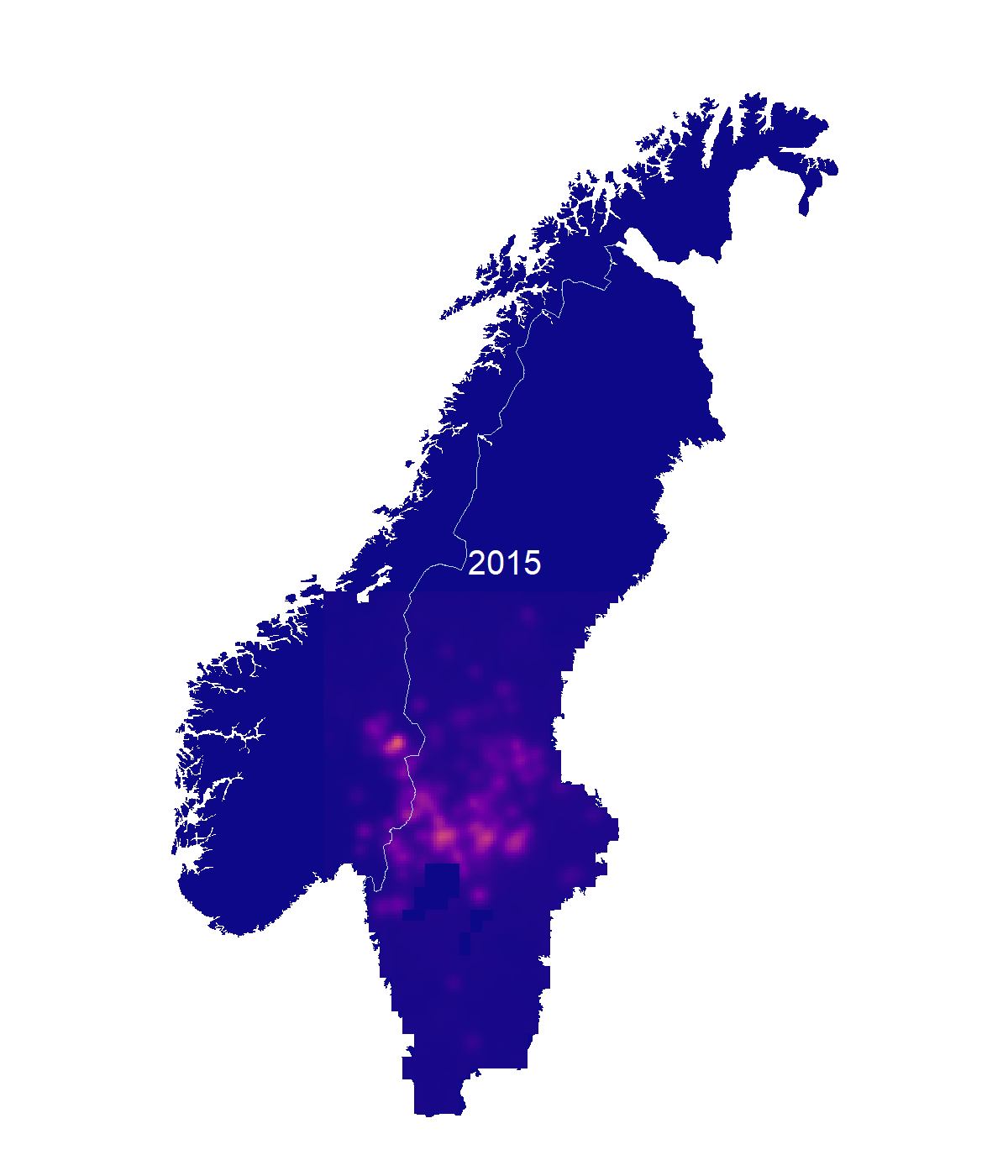New estimates from NMBU’s researchers show that the steady decline of the Scandinavian wolf population continues.
The newest analysis reveals that there are between 56-73 wolves in Norway. These animals are part of the wolf population on the Scandinavian peninsula, estimated at 414-470 individuals. This constitutes a steady decline in the wolf population over the past two years.
Impossible to register every individual
A research team at NMBU uses modern analytical methods to estimate these numbers from scats, urine, and hair left behind by animals and collected by authorities and volunteers in Norway and Sweden.
Why a range of values instead of just one concrete number of animals?
“We provide a range to reflect the uncertainty around population size estimates.” explains Richard Bischof, the NMBU professor and leader of project RovQuant. Researchers on the project have been producing large carnivore population estimates since 2019.

“These are wild and secretive animals” he goes on. “No matter how hard you search, you will never detect all individuals or know exactly where they are at all times”. The advanced statistical methods developed by the team take these limitations into account.
Maps, not just numbers
In addition to the size of the wolf population, NMBU generates maps of wolf density. These maps show how the wolf population has changed over time, not only in size, but also distribution. Numbers, maps, and underlying data for the past 10 years are freely available here.

More information:
The full report can be accessed here (pdf).
For more information about the team and the methods, click here.
